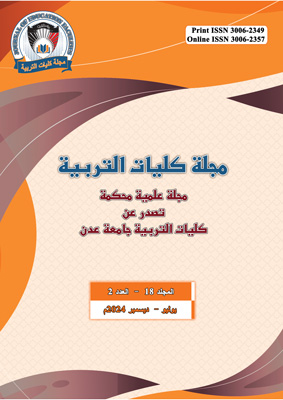The Effect of Using Visual Thinking Networks in Developing High-Order Thinking Skills in Chemistry Among Second-Year Secondary School Students in Aden Governorate
DOI:
https://doi.org/10.47372/jef.(2024)18.2.84Keywords:
visual thinking networks, high-level thinking skillsAbstract
The study aimed to reveal the effect of using the visual thinking networks strategy in developing high-order thinking skills in chemistry among second-year secondary school students in Aden Governorate. The experimental approach based on the quasi-experimental design with two groups was used: control and experimental. The study tool was represented by the high-order thinking skills test, and the study sample consisted of (49) students, including (23) students, representing the experimental group, which was taught using the visual thinking networks strategy and (26) students, representing the control group, which was taught using the usual traditional method. The study found that there were statistically significant differences at a significance level of (0.05 ≥ α) between the average scores of students in the experimental group and the scores of their peers in the control group in the post-application of the high-order thinking skills test, where the statistical significance level reached (.0260), which is less than the significance level of (0.05). Therefore, there are differences in favor of the experimental group, attributed to the use of the visual thinking networks strategy. Teaching using the visual thinking networks strategy proved its effect in developing high-order thinking skills in chemistry among second-year secondary school students in Aden Governorate. In light of the results reached, the study called for attention to programs for teaching thinking and higher-order thinking and various strategies for developing it, and training teachers on them before and during service.
Downloads
Published
How to Cite
Issue
Section
License
Copyright (c) 2025 Journal of the Faculties of Education - University of Aden

This work is licensed under a Creative Commons Attribution-NonCommercial 4.0 International License.

